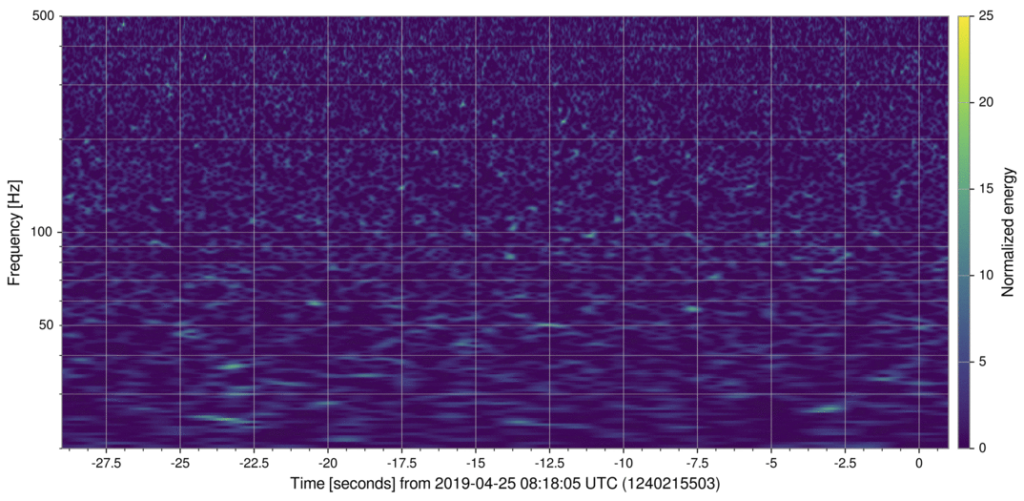On January 6, 2020, the LIGO Scientific Collaboration and the Virgo Collaboration announced the discovery of a second binary neutron star merger, labeled GW190425. This is the first confirmed gravitational-wave detection based on data from a single observatory. No electromagnetic counterpart was found. This system is notable for having a total mass that exceeds that of known galactic neutron star binaries.

Artist’s rendition of a binary neutron star merger.
[Image credit: National Science Foundation/LIGO/Sonoma State University/A. Simonnet.]
Publications & Documentation
- Publication: GW190425: Observation of a compact binary coalescence with total mass ∼3.4 Msun (submitted for publication). [arXiv link] [pdf download from LIGO DCC] [DCC page]
- LSC Press Release.
[Also available in these languages: Blackfoot, Chinese, Hebrew, Hungarian, Japanese, Spanish] - Virgo Collaboration news item on GW190425
- Science Summary Flyer [pdf flyer].
- Data release for GW190425 (Gravitational Wave Open Science Center/GWOSC).
- GW190425 fact sheet. Translations available here.
- See the main ligo.org detection page for further resources.

Spectrogram of the data from the LIGO Livingston detector at the time of GW190425.
The color scale shows a measure of the power present in the data at a given frequency and time. The animation alternates between two frames showing: (i) the spectrogram of the data (detector noise + signal) and (ii) the data with the GW190425 waveform subtracted. The differences between these spectrograms clearly show a “chirp” signal characteristic of compact binary inspirals. [Image credit: LIGO/Virgo.]
Additional numerical simulation of GW190425 This video shows the numerical relativity simulation of a binary neutron star system compatible with the source of the GW190425 signal, detected by the LIGO-Virgo global network of gravitational-wave detectors on April 25th, 2019. It is made of two parts, both showing the last orbits of the neutron stars, then their collision, followed by the prompt collapse of the remnant into a black hole. The first part focuses on the dynamics of the neutron star matter in the strong field central region; the highest mass-density (blue) are above nuclear densities, the white surfaces appearing later approximate the black hole horizon. The second part, a zoom out of the same simulation, shows the propagation of the emitted gravitational waves on the orbital plane and far from the source.
[Credit: CoRe collaboration www.computational-relativity.org / Jena FSU]
Images & Videos
Simulation of the binary neutron star coalescence GW190425 This movie shows a numerical simulation representing the binary neutron star coalescence and merger which resulted in the detected gravitational-wave event GW190425. The two neutron stars shown here have properties consistent with the detection made by the Advanced LIGO/Virgo detectors. Still images can be downloaded from this link.
[Credit: Numerical Relativity Simulation: T. Dietrich (Nikhef), Wolfgang Tichy (Florida Atlantic University) and the CoRe-collaboration Scientific Visualization: T. Dietrich (Nikhef), S. Ossokine, and A. Buonanno (Max Planck Institute for Gravitational Physics)]

